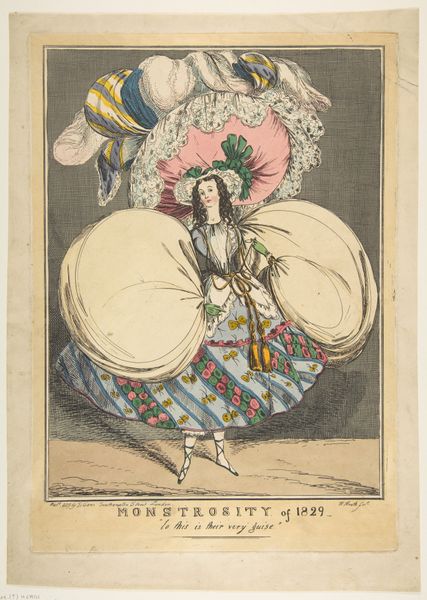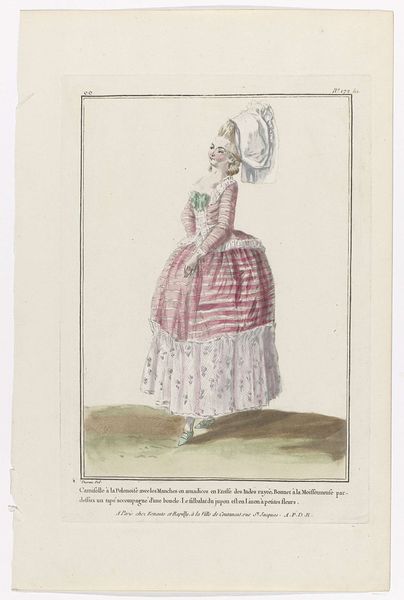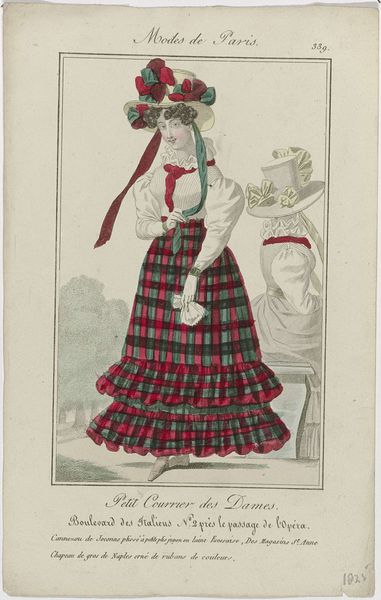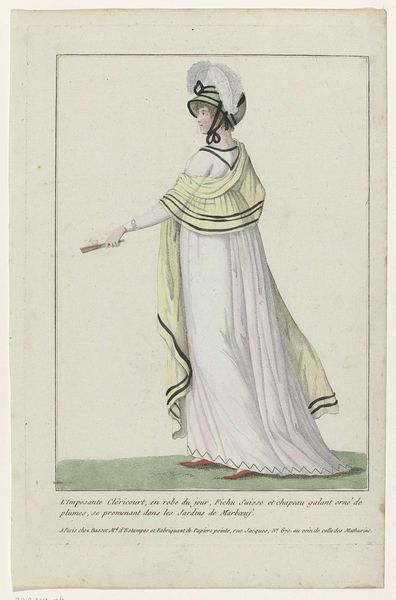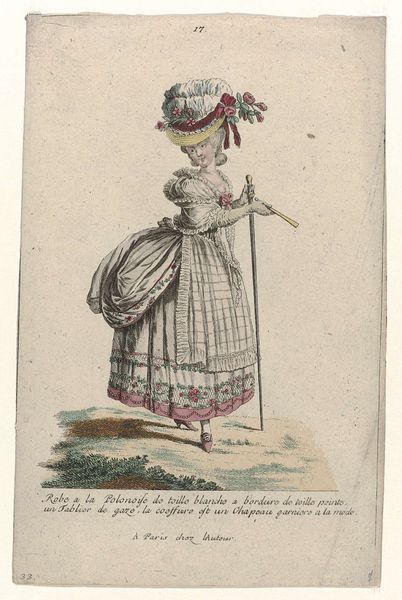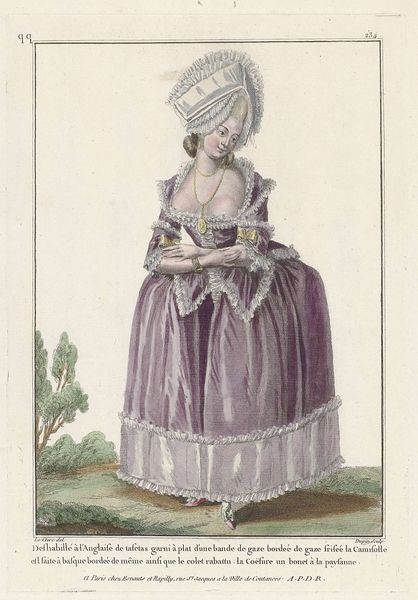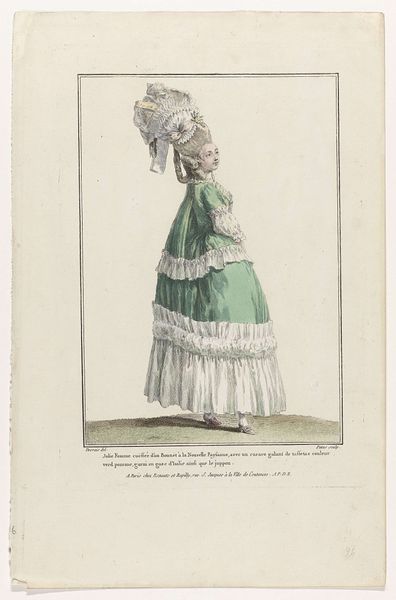
Enter Cowslip with a Bowl of Cream. - vide Brandenburg Theatricals 1795
0:00
0:00
drawing, coloured-pencil, print, engraving
#
drawing
#
coloured-pencil
#
neoclassicism
# print
#
caricature
#
coloured pencil
#
genre-painting
#
engraving
Dimensions: sheet (clipped impression): 13 3/16 x 8 7/8 in. (33.5 x 22.5 cm)
Copyright: Public Domain
Curator: James Gillray produced this print, “Enter Cowslip with a Bowl of Cream," in 1795. The piece is a colored engraving with some colored pencil work. Editor: It has a whimsical, slightly unsettling quality to it. The figure's exaggerated proportions are quite striking. Curator: Gillray was known for his caricatures, often poking fun at social and political figures of his time. The print, held here at the Met, likely draws its inspiration from the theatre—you can even see the words “vide Brandenburg Theatricals”. What is your take on that? Editor: Given the period, I am drawn to consider this within the context of shifting gender roles and societal expectations. The text itself emphasizes masculine versus feminine, in relation to Cowslip herself. The artwork, seemingly simple, invites deeper questioning regarding gender identity. Who was the depicted person and did they cross-dress in theatre or outside the theatrical stage? What did it mean for someone to portray that gendered persona? It's like the artist wanted to deconstruct traditional stereotypes. Curator: Interesting observations! It’s all there in the artistic techniques at work here, too. Notice how Gillray used line and color to amplify the already distorted figure, achieving a striking effect. Think about the choices inherent in choosing the printmaking technique as a mean of making this image available to wider audience. The print’s satirical edge allowed him to reach a broader segment of society and expose hidden inequalities or social oddities. Editor: Absolutely. We see here a clever dialogue between medium and message. The character almost floats because she appears larger-than-life; a figure constructed within a societal lens. Even the bowl of cream takes on symbolic meaning. It feels incredibly modern in its interrogation of normative categories and behaviours, wouldn't you agree? Curator: To a point. Gillray’s access to materials such as engraving plates and quality colored pencils allowed for relatively mass production, disseminating his critical viewpoint efficiently across late 18th-century London and beyond. So many people could literally purchase and trade such commentary. Editor: Considering our discussions today, I am going to ponder on how caricatures acted as tools of subversion within the political discourse of their period. I wonder how the audience in London would interpret it in the 18th century and how we, modern spectators, reflect on such image? Curator: Yes. Analyzing the piece through the lens of the work and labor involved in its creation reveals layers of social commentary that can challenge how we see the artwork today.
Comments
No comments
Be the first to comment and join the conversation on the ultimate creative platform.


